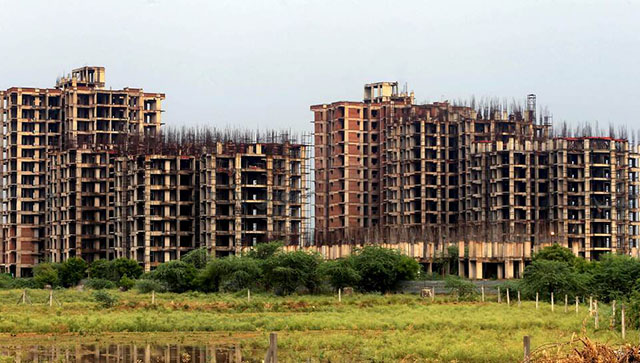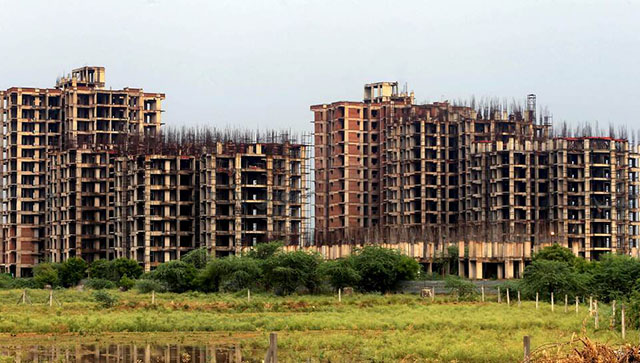Stranded with a huge unsold stock and facing a tight liquidity, builders have finally started cutting down on new residential project launches.
According to Propequity, a real estate research firm, housing launches till July this year fell by 38 to 59 percent compared with the same period last year, across key markets like Gurgaon, Navi Mumbai, Pune, Noida and Kolkata. Bangalore is the only city to have bucked the downward trend and reported a rise of 31.2 percent, launching 36,669 units until July, up from 27,950 in the year-ago period.
In North India, Noida had the steepest fall – 59.5 percent. Only 5,994 units were launched here during the period compared with 14,797 a year ago. Gurgaon too saw 38 percent lower launches at 11,955, compared with 19,310 in the a year ago. The west and the east saw a similar trend.
Launches in Navi Mumbai were down 40.3 percent, Pune 46.6 percent and Kolkata over 41 percent. According to data by PropEquity, launches across 15 major cities in India were down 15.8 percent to 188,145 units in all segments until July this year.
While some industry watchers say this divergence in trends in the North and South is because buyers in the South are more conscious and end-user related,resulting in better terms and timings of delivery. Others peg this to too many launches in the North, which already has an excess supply of inventory.
Shweta Jain, executive director, residential services, Cushman and Wakefield, told the_Business Standard_, “The south is a conservative market, in fact a conscious one as compared to National Capital Region and Mumbai.”
In today’s BS report , Samir Jasuja, founder and CEO, PropEquity says the reasons for the decline in launches are uncertainty in the economy and laggard sales. “…Many developers have deferred launches to manage the demand-supply mismatch,” Jasuja h as been quoted as saying in the report.
Delayed delivery of flats are a major issue in the National Capital Region (NCR). Builder-buyer litigations and consumer agitations are on the rise in the region due to this.
As Santosh Kumar noted in an earlier article in Firstpost, the region performs the worst amongall major Indian citiesin terms of delivery of residential supply due in 2013. Gurgaon, saw only only one-third of the total committed supply for 2013 delivered, with Noida seeing a dismal supply of only one-fifth of its committed 2013 supply being delivered.
While the West, Pune and Mumbai, have fared better in terms of project completions and could deliver more than 40% of the committed supply of 2013 as per scheduled delivery, pan-India more than 25 percent of the committed supply has been delayed.
These delivery delays have resulted in high inventory levels across India, with the country’s inventory of residential stock estimated to be above the level of 14-15 months. Mumbai has an inventory of close to 48 months, Delhi of 23 months and Bangalore of 25 months, according to a recent Jones Lang LaSalle report - a level close to that in 2007, when the residential market’s inventories were at an all-time high.
A recent Business Standard analysis of 19 listed realty firms from the BSE-500 index shows that despite net sales remaining flat at the end of March 2013, top builders are sitting on huge unsold real estate stock worth Rs 58,000 crore which could take more than two years to sell.
According to the report , DLF, India’s largest listed real estate developer, accounts for almost a third of the inventory worth Rs 17,600 crore. As of end March 2013, HDIL had unsold flats worth Rs 12,043 crore, more than six times its net sales during 2012-13 and Indiabulls Real Estate had unsold inventory worth Rs 5,111 crore, nearly four times its 2012-13 net sales.
Jones Lang Lasalle, in its latest report, says builders in Mumbai are sitting on an inventory of 48 months. “As a result, the ability of the market to cling to current prices is under severe stress,” said Ashutosh Limaye, head, research and real estate intelligence service, Jones Lang LaSalle India.
For Pankaj Kapoor, MD of real estate consultancy firm Liases Foras, eight months is a decent inventory level. “The moment it hits 8 months or more, it means builder has to borrow money to fund projects, which implies that he is highly leveraged,” he said.
NOT THE WORST FOR HOUSING
Despite the slowdown in overall launches, Sanjay Sharma, Qubrex, says that it is not an alarming situation.
“We are going through a slowdown; it is difficult to sell in the market. The enthusiasm of people is down since there has been no substantial increase in prices in the last six months or so,” he is quoted as saying in today’s_BS_ report.
Malini Bhupta, backs this view, in her column in the Business Standard , saying despite the talk of gloom and doom “the situation on the ground is not as bad as it was in 2009”.
Checks by analysts in different markets suggest that sales have not plummeted in a major way across the board, despite the stress being visible - especially in markets where prices had run up significantly and supply had also increased correspondingly.
“These markets would see a correction. With sales volumes improving and with better cash management strategies of players, analysts believe companies are in a better position now than before,” the column said .
Though the BSE Realty Index has underperformed the Sensex by 21 percent over the past three months, real estate companies’ balance sheets are in better shape that they were in 2009, it said.


)




)
)
)
)
)
)
)
)